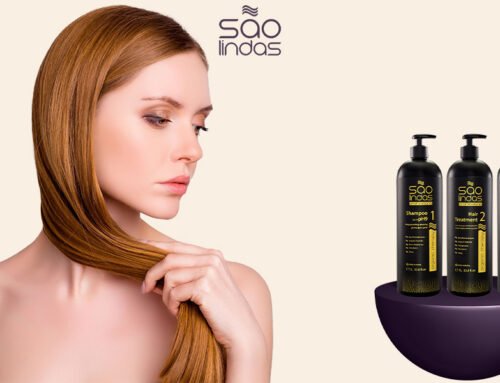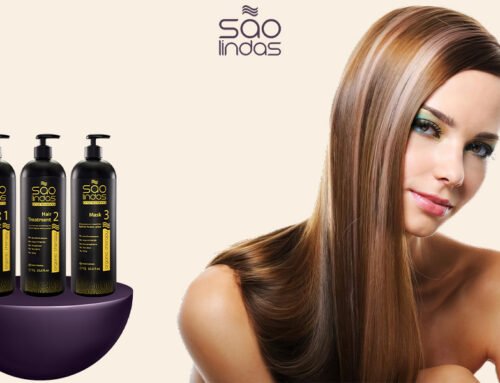We all want sleek, frizz-free Straightening hair at some point in our lives.
And every time you spot your favorite celebrity or model flaunting that stylish straight hairstyle on Insta or in the fashion magazines.
You want to try it too, really? We at Saolindas deal completely with you.
Straight hair, obviously, has the upper-hand among the other hair types.
This is because it can be managed and styled easily. Let’s take a look at the different ways in which you can straighten your hair, based on your hair type.
Is Straightening Good for Your Hair?
Well, this entirely depends on what you want to achieve. Straightening, of course, makes your hair appear sleek and frizz-free.
However, too much of it, especially using chemicals and heat, is not really good for your hair. It does more harm than good.
Straightening your hair too often can cause breakage and damage.
This is because straightenings produce a tremendous amount of heat that is not good for your hair in the long run.
This is why we have listed all its effects and the different ways of doing it, for those occasional events where you want to sport a straight and sleek hair do.
Pros And Cons Of Straightening Your Hair
Pros
- Makes you hair easily-manageable and sleek
- Permanent hair straightening won’t cost you much at a salon
Cons
- Straightening does not allow your hair follicles to retain their natural shape. This means they get damaged. Damaged follicles may result in hair thinning and hair loss.
- Harmful chemicals during permanent straightening can make your hair prone to dryness and breakage.
- Temporary straightenings mean too much heat. This can cause your hair to feel dry and eventually damage it if done regularly.
1. Hair Straightening
Hair straightening is the process of restructuring the bonds in your hair to alter its shape.
Your hair is made up of proteins that are connected by bonds.
These bonds determine your hair structure – you may have straight, wavy, curly or coily hair based on these bonds.
Hair straightening involves relaxing these bonds and breaking them down. This allows for the restructuring of your hair.
Procedure:
Hair straightening uses chemicals and heat to restructure your hair. This process typically takes between 3-8 hours, depending on the length and how elaborate the structure of your hair is.
Step 1:
The first step of the hair straightening process involves shampooing your hair.
Conditioner is not applied and your hair is left to dry naturally. Your stylist may or may not blow-dry your hair.
Step 2:
Your stylist will now divide your hair into sections in order to analyze it. He/she will then determine which relaxant to use on your hair.
Step 3:
Your stylist will use thin plastic boards to support this step (to make sure every strand of your hair is coated properly).
This step involves applying the relaxant. Depending on the texture of your hair, the relaxant is left on for about 30-45 minutes.
Step 4:
Your hair is then steamed. This process may last anywhere between 10-40 minutes depending on your hair texture.
Step 5:
Your stylist will now wash off the relaxant and deep-condition your hair.
Step 6:
Your hair will be straightened using a ceramic flat iron after a keratin lotion is applied to it.
Step 7:
A neutralizer will be applied to keep the bonds in place and secure them. It is typically left on for half an hour and washed off with cold water.
Step 8:
Your hair is blow-dried and straightened one more time using a flat iron.
Cons of hair straightening:
The usage of heat and chemicals can damage your hair and cause breakage.
Hair bonding process is an expensive affair, not only at the salon but also post-treatment.
Regular trips to the parlour may become necessary for you to treat the new hair that comes out from your roots. You may also have to invest in haircare products that prevent hair damage and loss.
How long will the results last for?
The effects of hair straightening typically last between 6-7 months. However, you may have to keep touching up the new hair at your roots depending on how fast your hair grows.
The 72-hour rule post hair straightening
It takes about three days for your hair to completely fasten up into its new structure.
Try to avoid these as much as possible for the first 3-4 days after you undergo hair straightening :
- Do not let your hair get wet. At any cost.
- Give up the bobby pins and hair ties.
- Go to bed with straight hair.
After 72 hours, keep these in mind:
- Invest in a mild shampoo.
- Wait a few extra minutes after conditioning your hair to allow it to soak up more moisture.
- Avoid using hair tools that produce heat.
- Do not wash your hair too often.
- Do not invest in any other chemical treatments like coloring for 6-7 months.
- Take lukewarm or cold showers.
2. Hair Relaxing
This is a more cost-effective and natural-looking method.
Hair relaxing uses chemicals to break-down the bonds in your hair and restructure it.
The difference between hair straightening and hair relaxing is that the latter method won’t fully straighten your hair.
This process mainly helps you achieve a smoother, frizz-free look along with straightening very prominent curls.
The hair relaxing procedure is only 1-2 hours long.
Note: The pH levels of the chemicals used in this procedure are high that may irritate your scalp.
How long will the results last for?
The results of this chemical hair straightening process lasts for up to 3 months.
3. Japanese Or Thermal Reconditioning
Similar to the hair straightening method, the Japanese straightening procedure uses chemicals and heat to straighten-out your hair.
Procedure:
Step 1:
The Japanese hair straightening method employs chemicals to break the protein bonds present in your hair, in order to get them ready to be restructured.
Step 2:
Your hair stylist will then use heat to straighten-out your hair post wash. Chemicals are again used to tighten the components of your hair.
Step 3:
Once your hair is straightened and the procedure is over, you will have to go back after 3 days for a follow-up session to completely lock your bonds.
How long does the method last for?
Results will last for up to 6-7 months.
Note: This procedure is not recommended if you have chemically treated hair and may not suit all hair types.
4. Keratin Treatment (Brazilian Treatment)
The Keratin hair straightening method involves soaking your hair in keratin to give it a straight and frizz-free look.
This technique is a lot safer than the other chemical straightening methods for your hair in the long run.
It also provides sun-protection to your hair. The keratin hair straightening procedure is about 1-2 hours long.
Procedure:
Step 1:
Your hair will be segregated into sections to make it easier for your stylist to apply keratin solution to it.
Step 2:
The keratin solution is applied to each strand of your hair for a few minutes.
Step 3:
A flat iron is used to lock-in the solution to your hair strands.
Cons of the Keratin treatment
The keratin hair straightening method is an expensive affair.
You may have to invest in sodium-chloride shampoos and conditioners post treatment.
Although safer than other hair straightening methods, this treatment can also result in hair damage.
How long will the results last for?
The results of this treatment usually last for up to 6 months. You will eventually notice your hair retaining its natural shape.
Temporary (Non-Chemical) Hair Straightening Methods
Non-chemical hair straightening can be done at home. They do not cost much and are good options if you want to change your look once in a while.
1. Straightening Iron
These are what we call “hair straightening’s”, which is very commonly used. These flat irons produce heat that reshapes the hair, removing creases just like a normal iron would.
2. Hot Comb
A hot comb temporarily straightens the hair. It makes it appear sleek and improves texture.
3. Blow Dryer
You can blow dry your damp hair using a round brush to straighten it out.
4. Straightening Brushes
This run-on electricity and can be used to straighten your hair temporarily.
The brushes have large bristles that produce heat.
Make sure your hair penetrates properly through the brush to achieve maximum outputs.
Note: Do not do these procedures too often. The heat produced from the devices can damage and break your hair.





